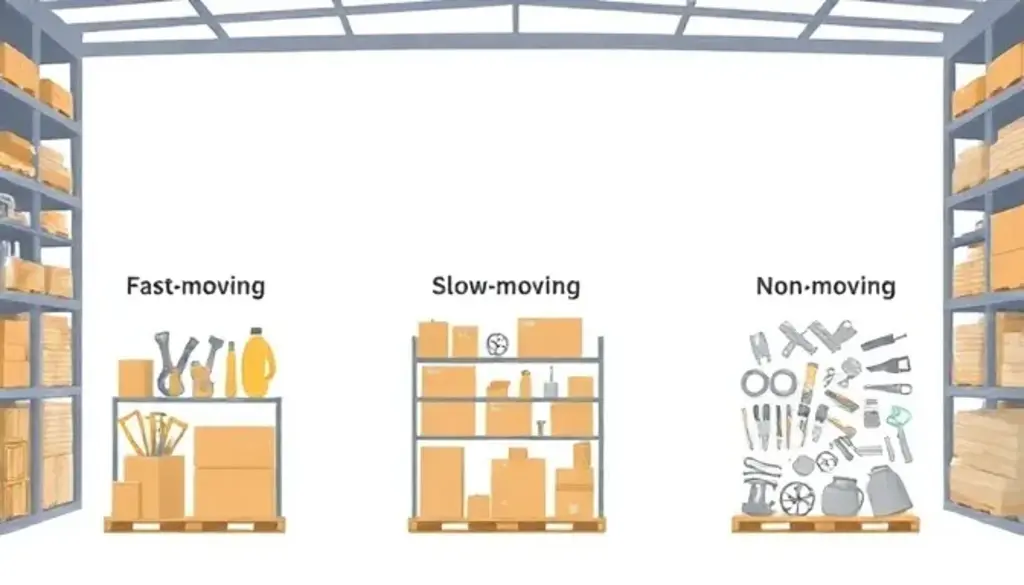
Understanding the FSN Method: An Overview
The FSN (Fast, Slow, Non-moving) method is a strategic approach to inventory management that categorizes items based on their movement velocity. This method helps businesses manage their stock more efficiently by identifying how frequently each item is moved over a given period. Unlike other inventory categorization methods such as ABC analysis, which prioritizes items based on their monetary value, the FSN method focuses solely on the rate of movement, offering a unique perspective that is crucial for operational efficiency.
Comparing the FSN method to other techniques, such as ABC analysis, highlights its importance in modern inventory management. While ABC analysis divides inventory based on value, contributing directly to profitability, the FSN method provides insights into product lifecycle and stock fluidity, which are essential for reducing holding costs and optimizing storage space. This makes the FSN method particularly valuable in environments where space constraints and product obsolescence are major concerns.
Categories of the FSN Method Explained

Fast-moving, Slow-moving, and Non-moving Inventory
- Fast-moving items are those that are frequently ordered and quickly sold or used. Examples include best-selling products or essential raw materials in manufacturing.
- Slow-moving items are less frequently moved but still have a regular turnover. These might include seasonal products or spare parts that are important but less frequently used.
- Non-moving items are those that have not been moved for an extended period. This category often includes obsolete or over-ordered products.
Understanding these categories helps in making informed decisions about purchasing, storing, and promoting products. For instance, fast-moving items may require more dynamic purchasing and replenishing policies compared to slow-moving ones, which might benefit from bulk buying but less frequent reordering.
Implementing the FSN Method in Your Inventory System
Implementing the FSN method involves several steps, starting from data collection to the continuous monitoring of inventory categories. Here’s a step-by-step guide to help integrate this method into your inventory management system:
- Data Collection: Gather data on all inventory items, focusing on the frequency of sales or usage over a significant period.
- Categorization: Classify the inventory into Fast, Slow, and Non-moving categories based on your data analysis.
- Analysis and Action: Develop strategies for each category to optimize stock levels, such as more frequent orders for fast-moving items and discounts or promotional efforts for non-moving stocks.
Tools and technologies play a crucial role in supporting the FSN categorization. Inventory management software can automate much of the data collection and analysis process, providing real-time insights into inventory dynamics. Additionally, implementing RFID tags and IoT devices can enhance the accuracy of tracking item movements across the warehouse.
Benefits of Using the FSN Method for Inventory Management
The FSN method offers numerous benefits that can significantly enhance inventory management:
- Improved Inventory Accuracy: By regularly categorizing inventory based on movement, companies can maintain more accurate stock records, reducing instances of overstocking or stockouts.
- Reduced Holding Costs: Identifying non-moving items allows companies to reduce unnecessary stock, thereby lowering storage costs and minimizing capital tied up in inventory.
- Enhanced Forecasting and Planning: Understanding inventory movement patterns aids in better demand forecasting and resource allocation, ensuring that resources are invested in items that contribute most to the business.
Challenges and Solutions in Applying the FSN Method
While the FSN method provides substantial benefits, it also comes with challenges:
- Data Management: Large volumes of data can be cumbersome to handle without the right tools. Implementing robust inventory management software can mitigate this issue.
- Changing Inventory Dynamics: As market trends shift, so do inventory movement patterns. Regular reviews and adjustments to the FSN categorization are necessary to keep up with these changes.
Case studies from various industries, such as retail and manufacturing, demonstrate the effectiveness of the FSN method in improving inventory management. These real-world examples provide practical insights and proven strategies for overcoming common obstacles.
Future Trends in Inventory Management and the Role of the FSN Method

The future of inventory management is likely to be shaped by advances in technology, such as AI and machine learning. These technologies can enhance the FSN method by providing more sophisticated analytics and predictive capabilities, making it possible to anticipate changes in inventory dynamics more accurately.
Moreover, as businesses continue to seek efficiency and cost-effectiveness, the principles of the FSN method will remain relevant. By adapting to technological advancements and integrating new tools, the FSN method will continue to play a crucial role in inventory management strategies.
How Argos Software Supports FSN Inventory Management
Argos Software provides powerful inventory management solutions tailored to businesses looking to optimize stock levels and streamline operations. With built-in FSN classification capabilities, Argos Software helps companies automatically categorize inventory based on movement patterns, ensuring more accurate demand forecasting and efficient stock management.
Key features that support FSN inventory management include:
- Automated Inventory Tracking: Real-time data collection and monitoring to ensure accurate classification of fast-moving, slow-moving, and non-moving items.
- Advanced Reporting & Analytics: Customizable reports that provide actionable insights into stock movement trends, helping businesses reduce excess inventory and optimize storage space.
- Seamless Integration: Connects with ERP and warehouse management systems to create a unified inventory strategy that adapts to market changes and business needs.
- Smart Replenishment Strategies: Ensures fast-moving items are always stocked while identifying slow-moving and non-moving inventory for potential markdowns or phase-outs.
By leveraging Argos Software’s inventory management tools, businesses can enhance their FSN-based strategies, reduce holding costs, and make data-driven decisions for long-term profitability.
Conclusion
The FSN method is a powerful tool for enhancing inventory management. By categorizing items into Fast, Slow, and Non-moving, businesses can gain valuable insights into their inventory dynamics, leading to improved decision-making and operational efficiency. While challenges exist, they can be effectively managed with the right strategies and technologies. As inventory management continues to evolve, the FSN method will remain a key component of successful inventory strategies, helping businesses stay competitive in a changing market landscape.
Ready to Take Control of Your Inventory?
Discover how Argos Software can help you optimize your FSN inventory management and improve operational efficiency. Contact us today for a demo!




